Our expedition around the West Coast and the surrounding area continued. See Our Top Picks for the West Coast – Part One.
We found out fast that the West Coast offers more than what we thought and in between House Sitting the BnB, looking after Roxy (our foster fur baby) and caring for the property, we set off on some more short adventures around the area.
Woods Creek Track
We had heard great things about the Woods Creek Track so we were keen to check out the 1.1km (45 min) loop track. It is packed with things to explore so allow much more time than this to fully appreciate the remnants of tunnels, races, walls of stacked stone and regenerating forests.
Getting There
Driving south from Greymouth on SH6 for around 8km, turn left onto the road towards Shantytown. Carry on down this road for 22 km.
Follow the signs that will take you to the end of the tarseal. The road at this stage is okay apart from a few potholes. For those towing or in a motorhome, I would recommend that you do not go past the 1.4km sign.
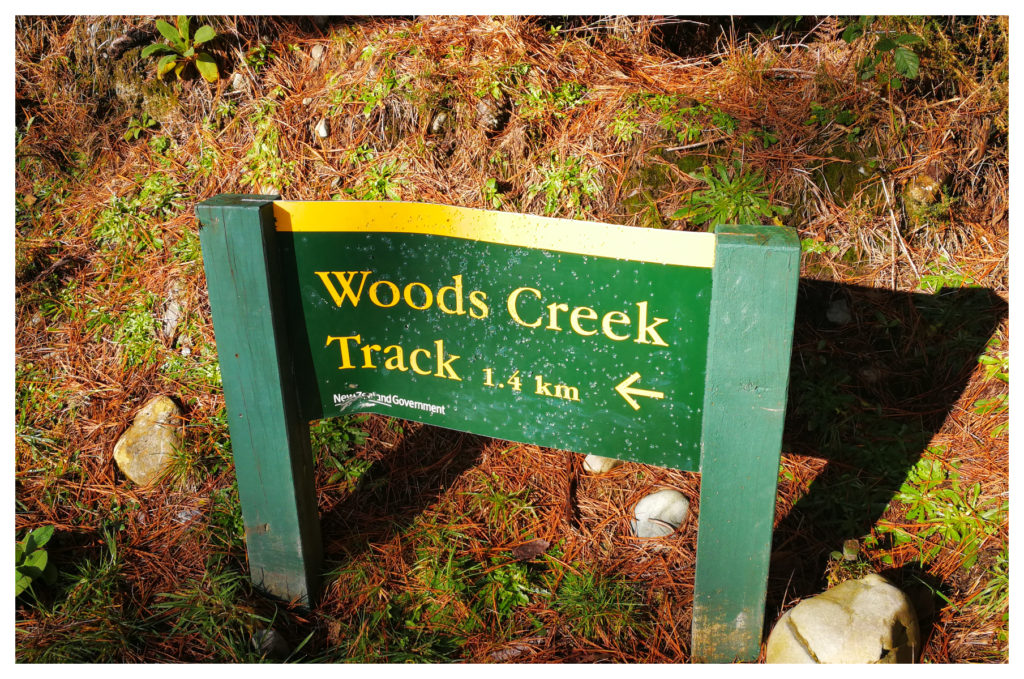
If you are towing or driving a campervan, this is the sign you need to look out for. I wouldn’t recommend you continue to drive past this point
At this sign, there is a large parking area and this is where I recommend you park. Walk or get on your bike to travel the last part of the road to the start of the track. NB: the walking track is not suitable for cycling. The last 400m is quite rough. It was no problem for us in our 4×4 ute which has a heap of clearance – more challenging if you are in a front wheel drive or had limited clearance.
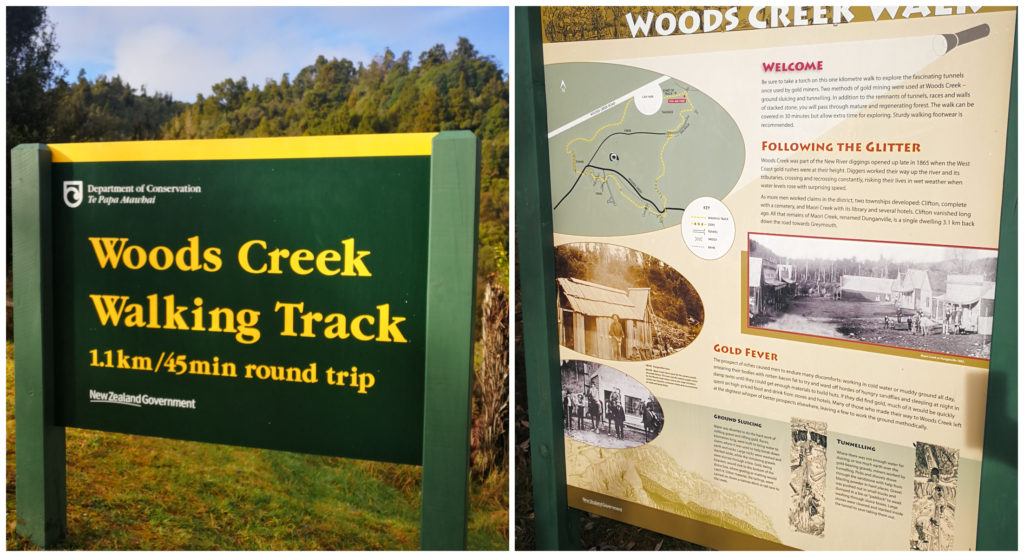
There’s good signage at the start of the track
Plenty of Mining History
We were amazed at how much gold mining history there is in this small area. We could easily make out the tailraces and tunnel workings. This area was also worked by the Chinese in the late 1800s. What these miners built is nothing short of an engineering marvel for the day.
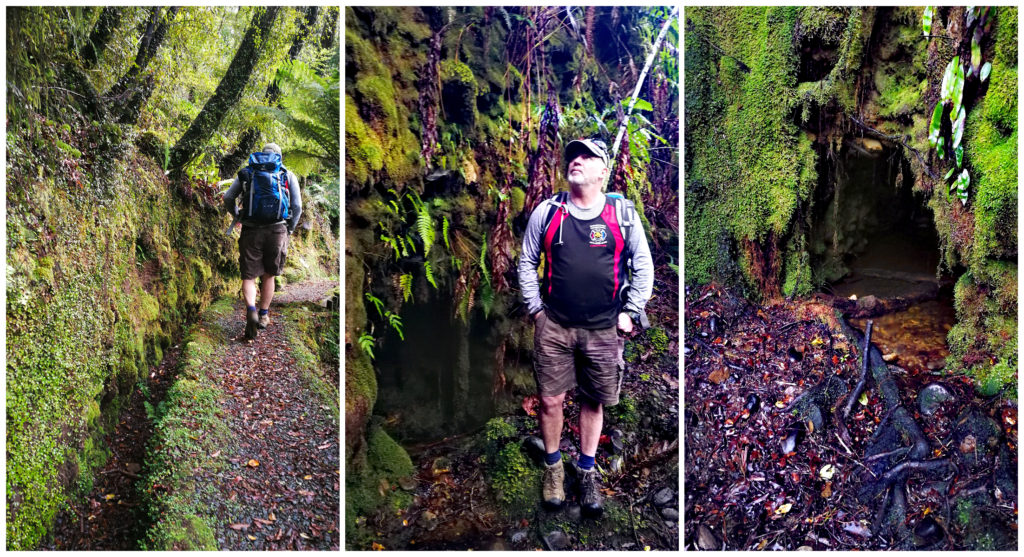
Almost straight away, we start seeing caves, tunnels, rock walls and water races
Back then, there were no diggers, loaders or other modern mining machinery to assist them and we could see where the rocks were stacked up which were all dug out by hand.
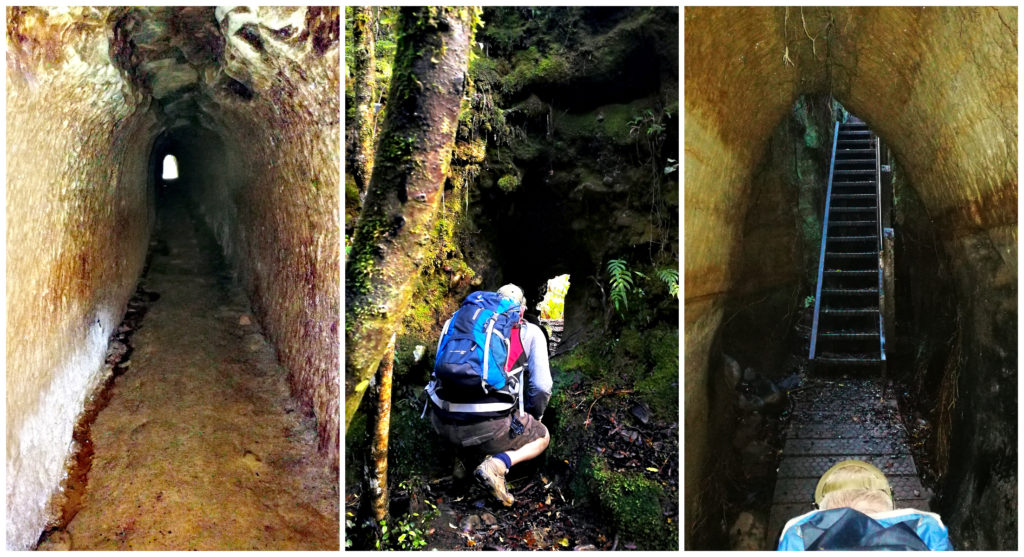
tunnel and cave exploring was on the agenda
We used our flashlights to explore some of the tunnels and saw where they made ledges for the candles along the tunnel walls. It was a little disconcerting knowing that we had tons of rock over our heads as we travelled deeper into the rock face.
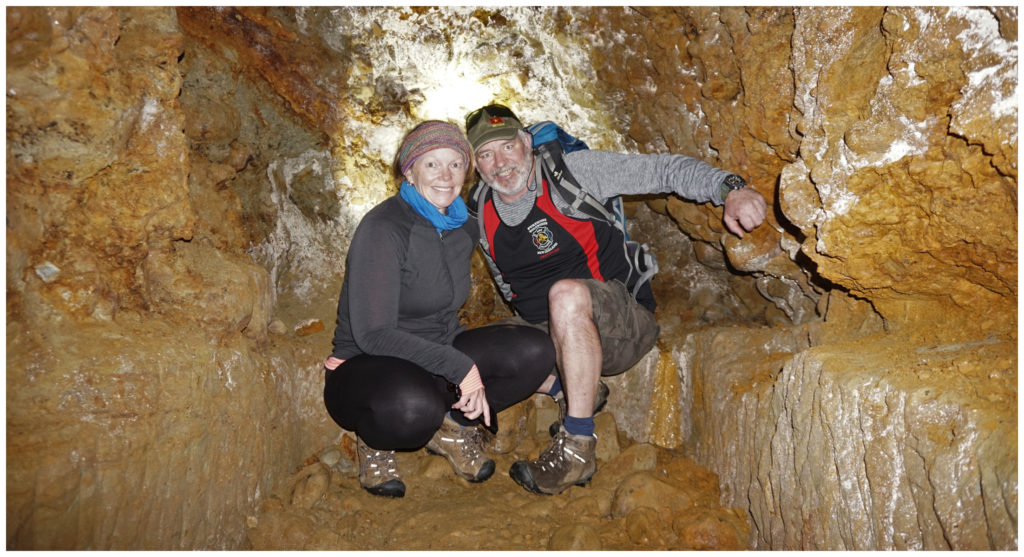
still smiling despite spotting the odd cave weta!!
It was the sighting of the cave wetas that made my exit a little hasty rather than the fear of a cave-in!
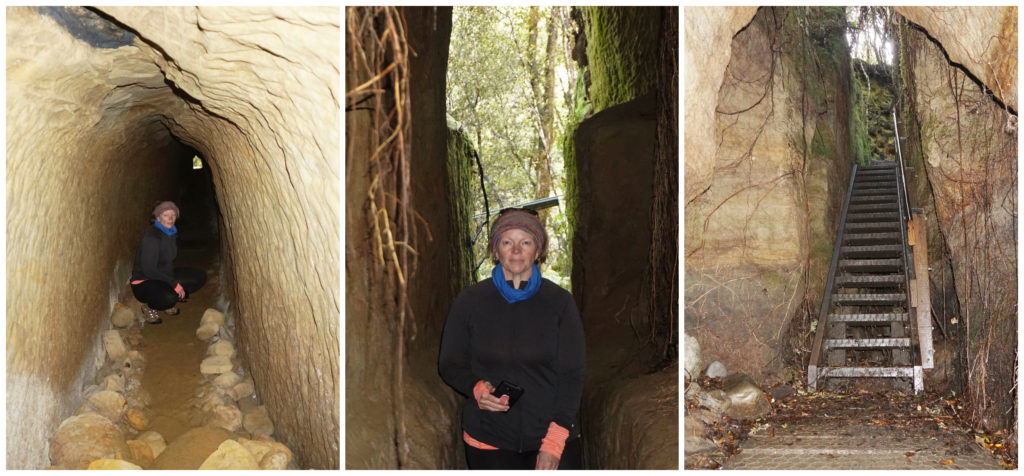
It was mind-blowing to see the engineering feats of these early miners!
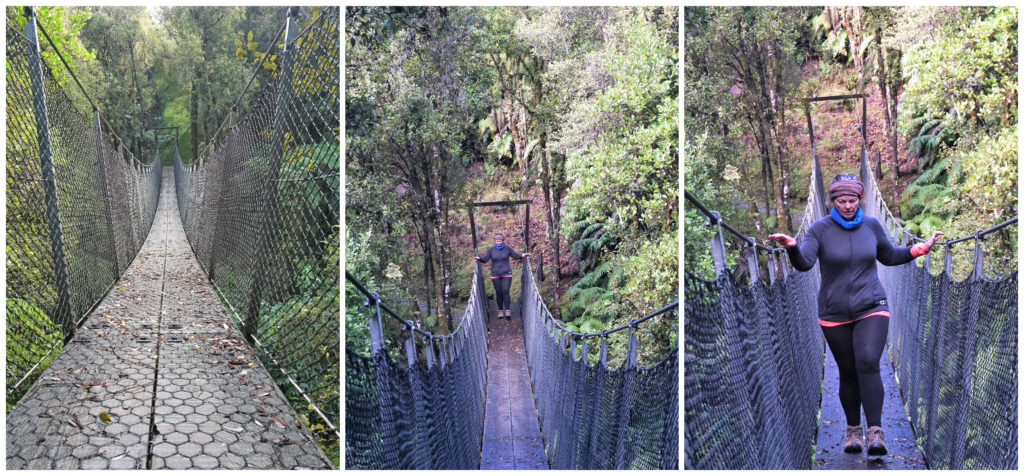
in case you didn’t notice…..this is not a happy face, trying to negotiate a very swinging suspension bridge!
Essential Equipment
You don’t need to be a fitness freak or an avid hiker to enjoy this track. There is so much packed into such a small area that I think anyone with average mobility would be able to enjoy this track.
Just make sure you wear sturdy footwear and if you want to explore some of the tunnels, take a flashlight -oh and don’t forget your camera.
Road trip Lake Brunner via Kumara
We loaded our foster fur-baby in the back seat of the ute and decided that it was time for another roadie. The weather forecast wasn’t looking the brightest so it was a great day to take to the road instead of a hiking track for a change.
Arahura River Bridge
You know you are getting old when you can remember travelling over a bridge that they have now turned into a Heritage Park!
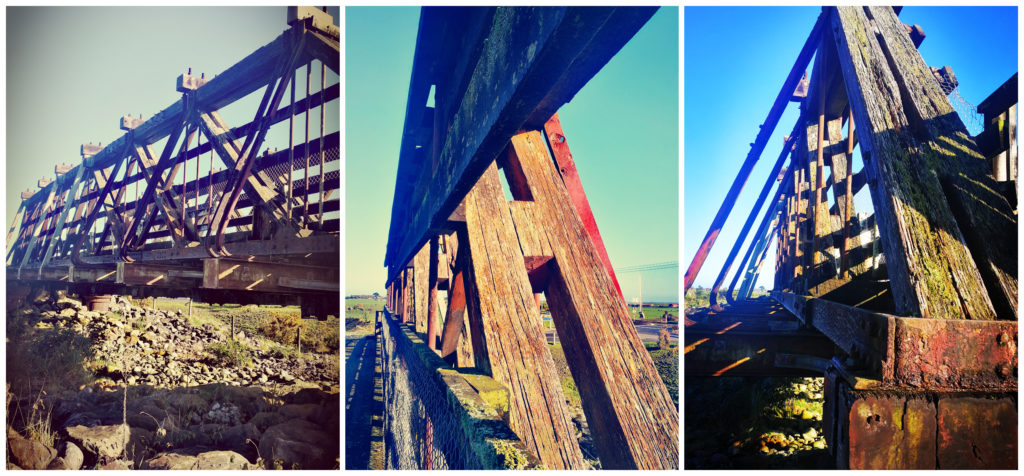
a portion of the ‘shared space’ bridge
The old Arahura Bridge was demolished in 2009 and they have retained one span of the bridge which sits beside the new, sleek modern version bridge.
The original bridge was constructed in 1886 and was turned into a combined road and rail bridge in 1891. The bridge was an important link in the West Coast’s transport network for around 110 years. It was also one of the rare remaining NZ examples of a large timber truss bridge.
Hokitika
It had been quite a few years since we had a look around Hokitika so this was our next stop – a coffee overlooking the driftwood-strewn beach seemed like the ideal spot.
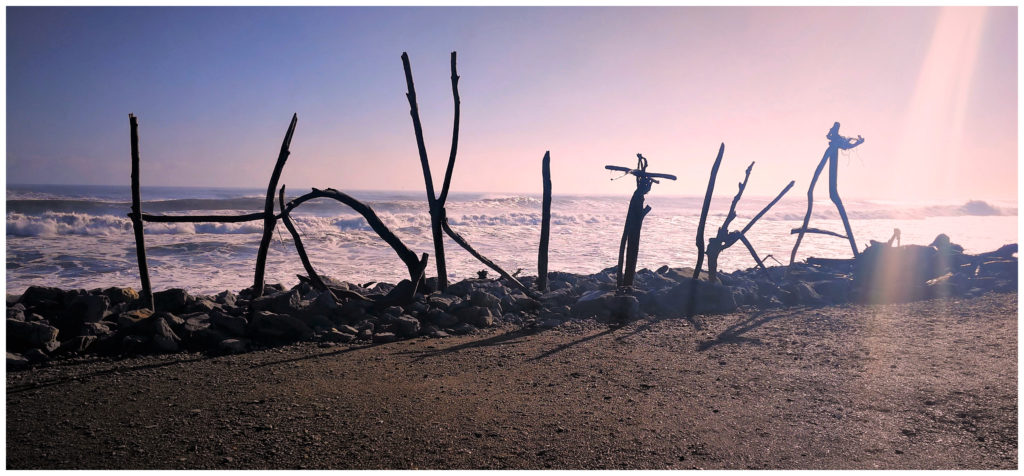
Possibly the most photographed spot in Hokitika
The main shopping area still looked pretty much the same as it did all those years ago with Jade (Pounamu) Shops dotted around the main areas. This is a popular stop for tourists who want to make their own Pounamu jewellery or shop for a ready-made item.
Kumara
The quaint town of Kumara is proud to be the site of one of NZ’s last great gold rushes. We didn’t have much time to have a look around but covered off some of the town’s ‘claim to fame’ spots.
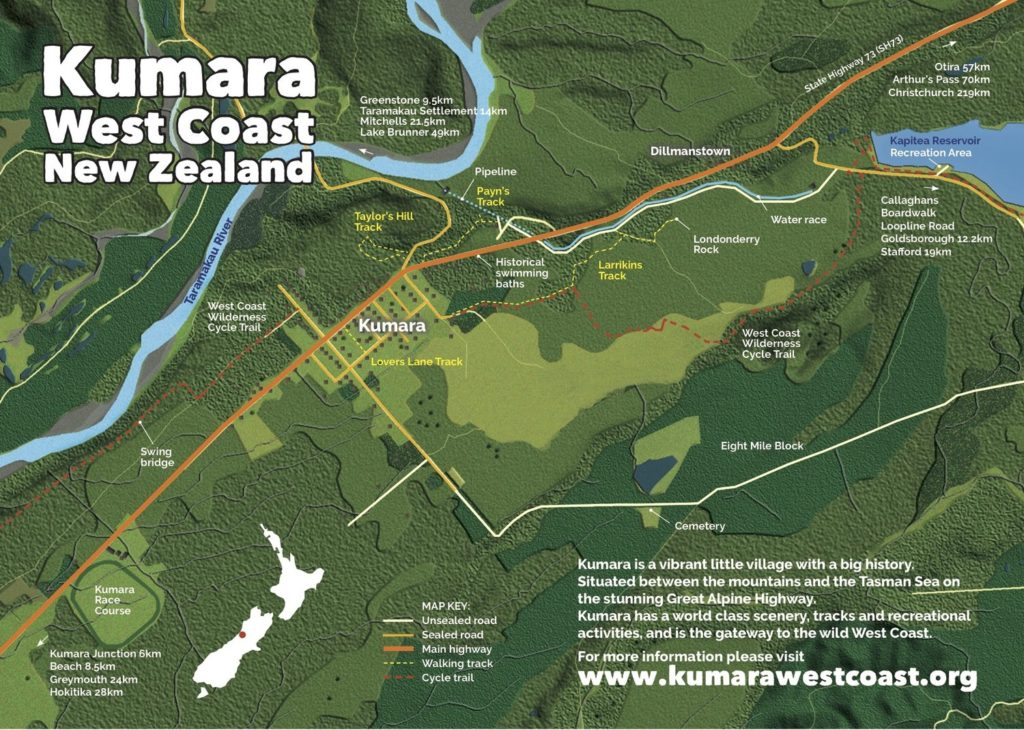
The West Coast Wilderness Cycle trail is putting Kumara back on the map
At the beginning of the ‘great rush’ the bush was cleared and a busy town sprang into life. There were no less than 41 hotels, hospital, courthouse, police station and even had its own newspaper.
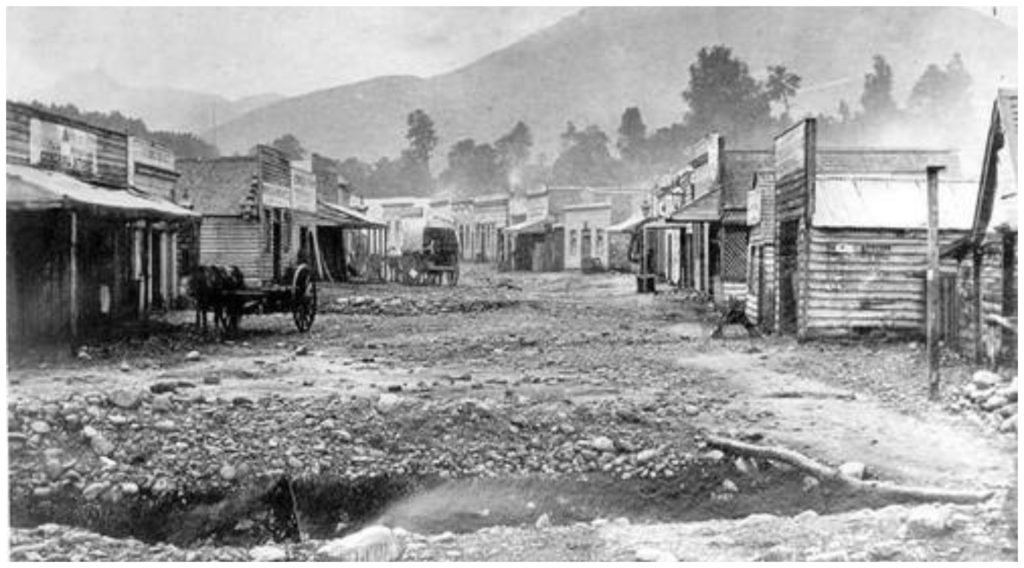
The main street as it was. The history boards around the town tell the stories of days-gone-by
It is also known as the home of Richard John Seddon (King Dick). He lived in Kumara with his family for 20 years. He eventually moved to Wellington when he became NZ Premier and resided in Parliament for 13 years until his death.
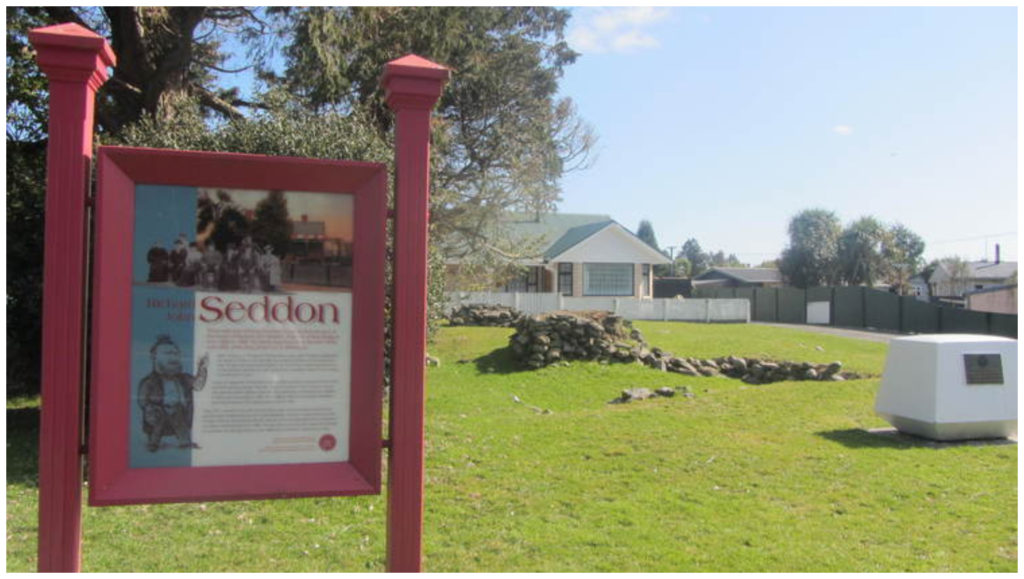
Rocky foundations are all that is left of Seddon’s House
As we drove around the side streets of Kumara, we could see the strategically placed history boards, many with pictures, telling the story of what sat on that site many years ago. We located the foundations of Richard Seddon’s family home and also where the original Post Office was located.
Kumara Swimming Baths
Our next stop in Kumara was the historic Swimming Baths.
These swimming baths were built in the 1930s during the great depression. They used the rocks from the gold sluicing and the water came from the Dillmanston water supply.
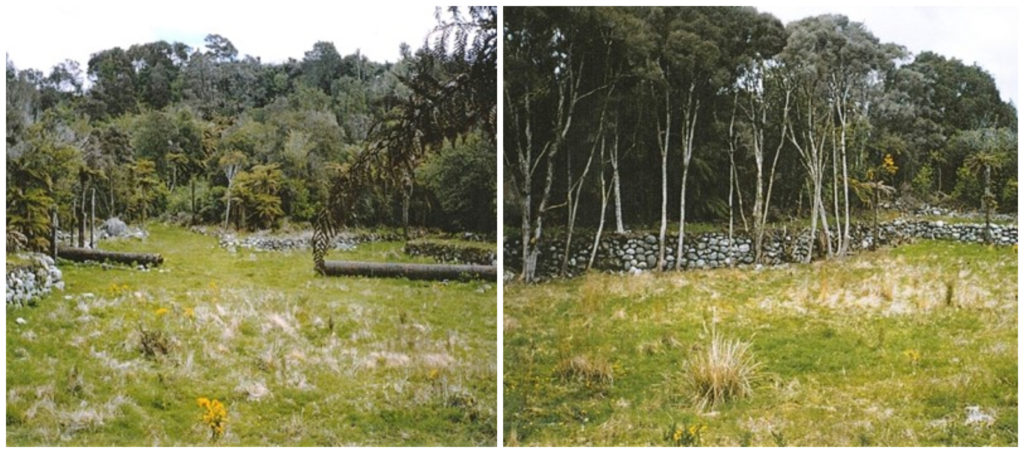
It must have been a great place to spend the day when this was once in full swing
At the time of construction, it was the largest swimming complex in NZ. Now all that remains are the rock walls but we could clearly see the outline of the massive pool. We followed the track that takes you around the perimeter and we could really get a feel of what it must have been like. Set up with a diving board and two wings that were for children, the residents of Kumara must have spent all their summer days at this amazing pool.
Unfortunately, in the 1940s the pool was closed down when it lost its water supply.
Londonderry Rock
Just a little further down the highway, you will find the signposts to take you to visit the Londonderry Rock.
A gravel road takes you along the Kapitea water channel to the car park where it is a short walk through the rich, mossy forest between large piles of tailing stones. This area was mined extensively in the late 1800s.
It is hard to believe that these tailings were all moved here by hand!
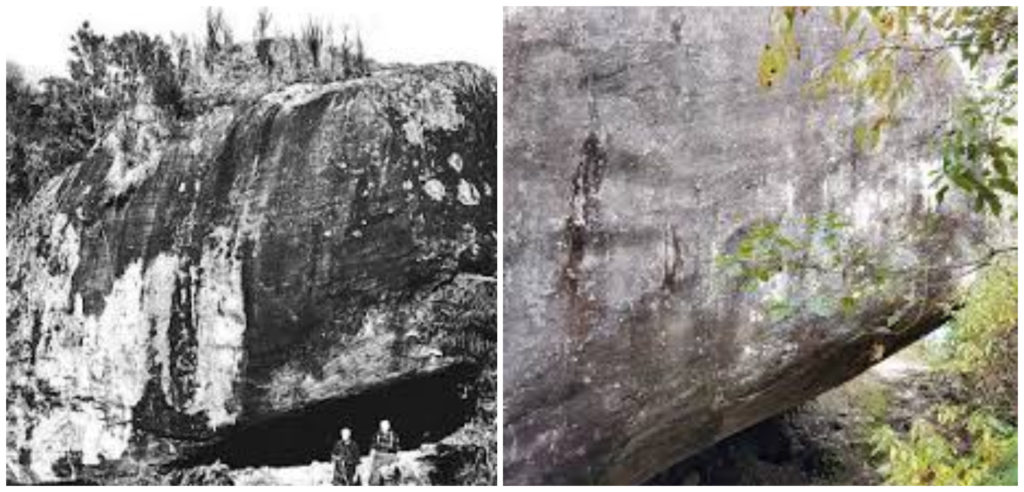
‘The Rock’ when it initially fell dwarf the two miners and ‘The Rock’ as it is today
Now the rock itself is enormous. It is said to weigh 4,000 tons and originally rode the wave of a massive glacier. Because it sat on top of the glacier for thousands of years, it eluded the grinding and crushing effect that glaciers on the move have on the surrounding rock faces.
The rock was dislodged by the miners sluicing around it during the 1880s and fell to its current resting place with such a ‘thud’, an earthquake type shudder that it apparently shook, and stopped the local post office clock.
This rock was too large for the miners to move or break so here it has sat ever since.
Lake Brunner
After leaving Kumara we took the back road around Lake Brunner. This took us around the side of the lake through a small settlement called Inchbonnie and ending up at Moana before heading back to the West Coast.
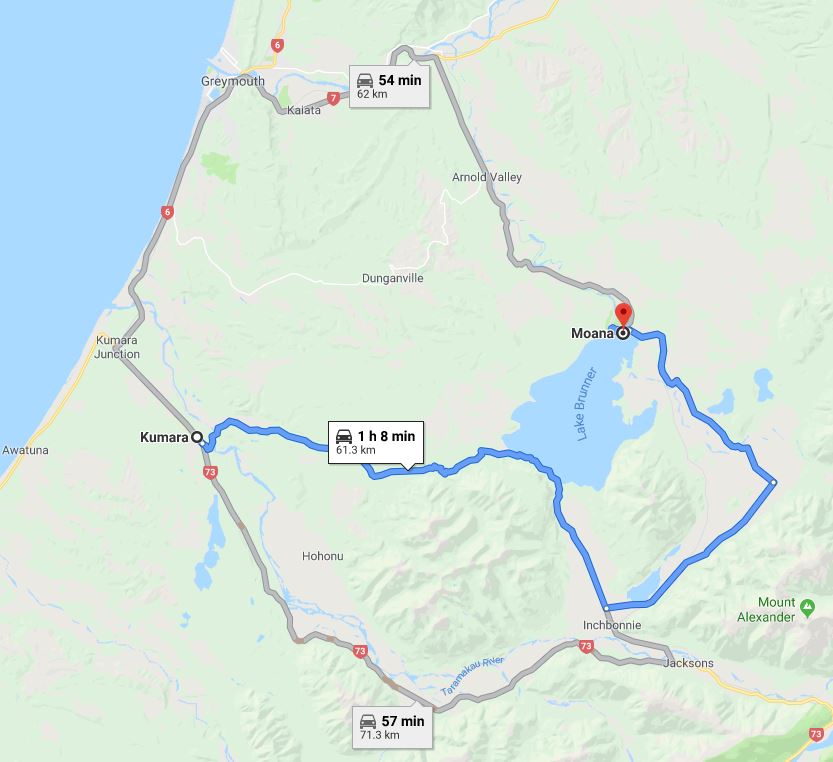
The back roads are often not the shortest way but usually the best!
Both of us have not been on this road before so it was interesting discovering new places and sites.
There are various freedom camping areas, walks and places of interest to stop and have a look at. When we reached the Kahikatea swamps, it was a ‘stop the car Scotty!’ type moment. The photo opportunity was too good to miss.
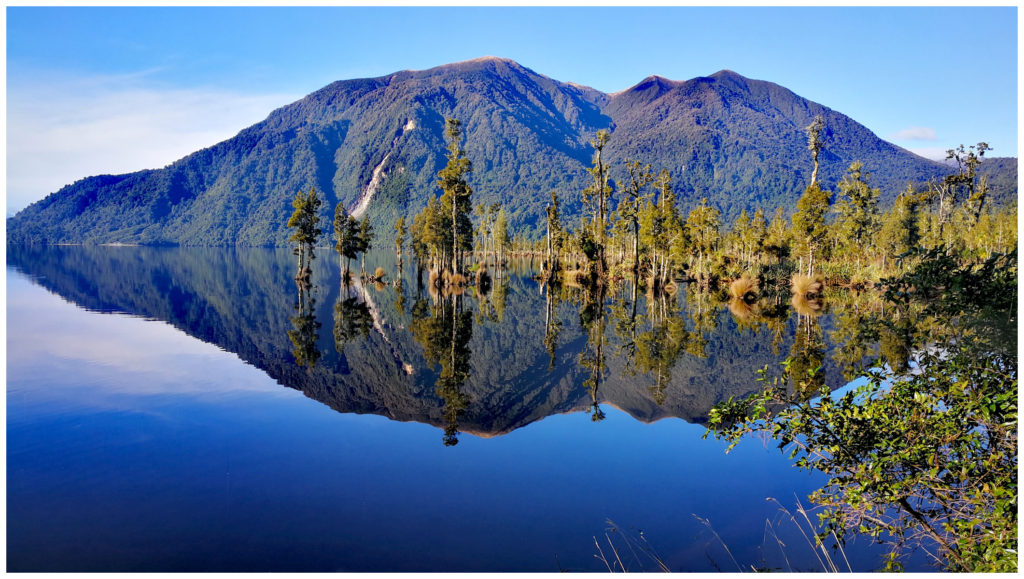
This is why Scotty had to stop the car!!
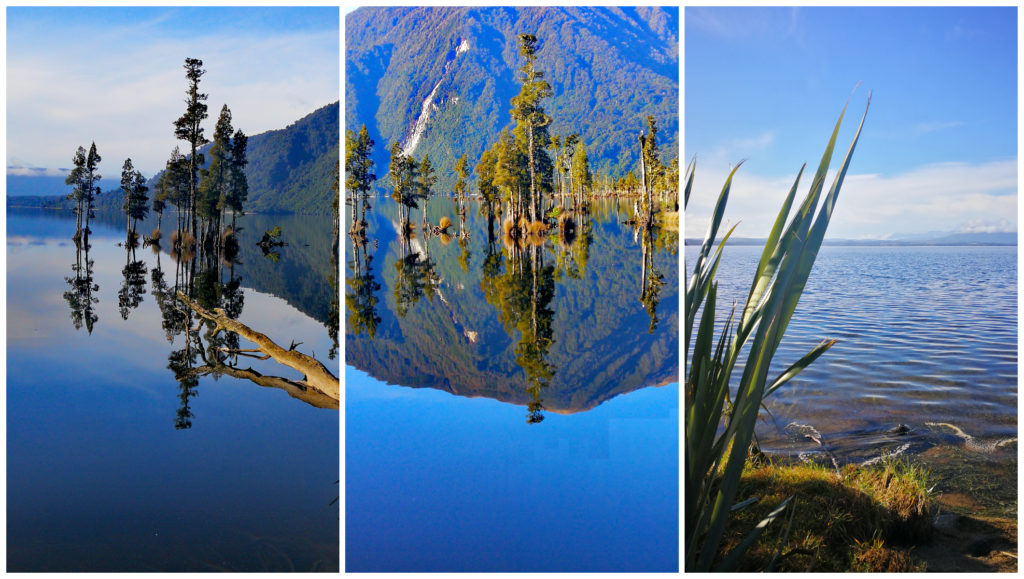
It’s the gift that keeps on giving!!
Lake Brunner is the largest lake in the northwestern South Island. It covers an area of 40 square metres. Although it is only several kilometres inland from the West Coast, it is less frequently visited by tourists. However, this is all changing as the township of Moana is becoming increasingly popular. This is in part due to its reputation for fishing. The wild brown trout and the eels abound and we could frequently see trout breaking the surface of the mirror still water.
Brunner Mine Site Memorial
After a short stop at the Moana Camping Ground store for ice cream, we continued along the road back to the West Coast. Our next stop on our roadie around the West Coast was the Brunner Mine Site Memorial.
New Zealand’s’ worst mining disaster happened on 26 March 1896 at Brunner on the West Coast, killing 65 men.
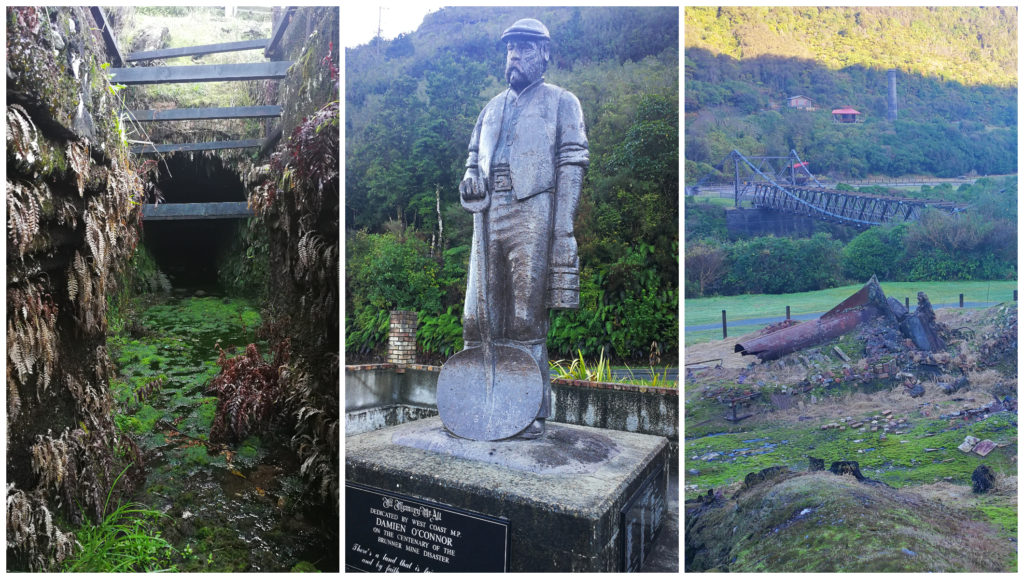
The lone miner memorial and one of the air vents to the original mine shaft
A historic memorial site now stands on the location of the disaster. The disaster and the plight of the families caught the attention of the whole nation. It ultimately led to improved workplace safety legislation and practices.
The memorial site sits on the side of State Highway 7 on either side of the Grey River, a suspension bridge joining each side.
The Brunner Mine Site was a big producer of coal and coal by-products such as coke and firebricks.
We were the only visitors on-site and the area had an eerie quietness to it – you could almost feel the souls of every 65 men and boys.
There was also a plaque with the names of the 29 miners who lost their lives in the Pike River disaster.
Blackball
We had some time to fill in at Barrytown so we decided a roadie to Blackball was in order. We wanted to check out a few places and understand what made this town tick back in the day.
Snuggled beneath the Paparoa Range and about a 20-minute drive from Greymouth, it was once a loud and proud mining community.
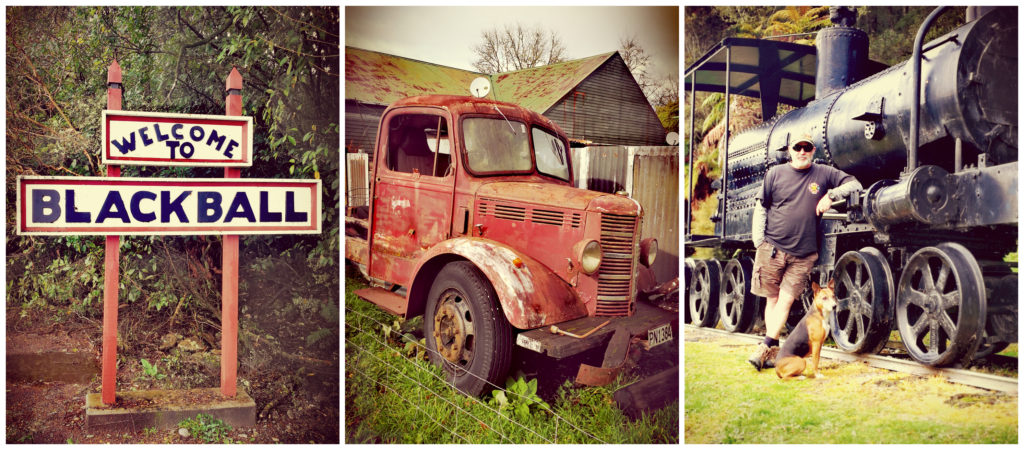
Blackball, where time seems to have stood still
History Lesson
Blackball has a very interesting history. Back in 1860, an impressive 22-ounce nugget was discovered in the Blackball Creek. It proved to be the best find for the area. When coal was discovered during the hunt for gold, a large investment was needed for development. Two years later the Black Ball Coal Mining Company NZ formed in London and the rest is history. The first coal mine opened in 1893.
Along with a school, there were two churches, a hotel, shops and about 550 settled villagers.
It is also known as the birthplace of the NZ Labour Party. This followed the 1908 miners strike. This is the longest-running strike in NZ history. It continued for 10 weeks.
The pit closed in 1964, thus began the steady decline of the town. These days it has a population of around 300 and certainly appears to be one of those sleepy little towns. We only knew that a lot of the homes were occupied by spotting the coal smoke wafting from their chimney.
Formally The Blackball Hilton
Blackball entered the news again in the 1990s, when its hotel, the Blackball Hilton, was forced to change its name because lawyers from a certain hotel chain contacted them. The hotel had to make a name change and is now officially known as Formerly the Blackball Hilton.
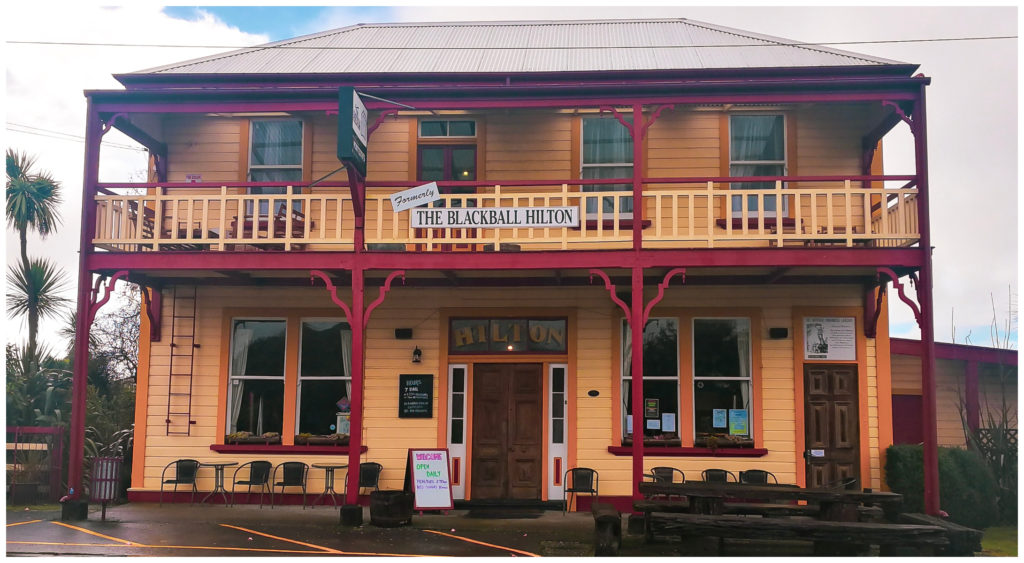
If only these walls could talk!
The ‘Formerly the Blackball Hilton’ was built in 1910 as the Dominion Hotel, but changed it to Blackball Hilton after the mine manager, after whom the town’s main street is also named.
We were in Blackball too early to enjoy a feed and pint as the doors hadn’t yet opened. I’ve been told that they serve great burgers and Cornish pasties. Next time maybe!
Blackball Salami
We had heard of the nationally famous Blackball Salami. Here you will find locally produced salami, cooked and uncooked sausages, bacon, black pudding and meat patties.
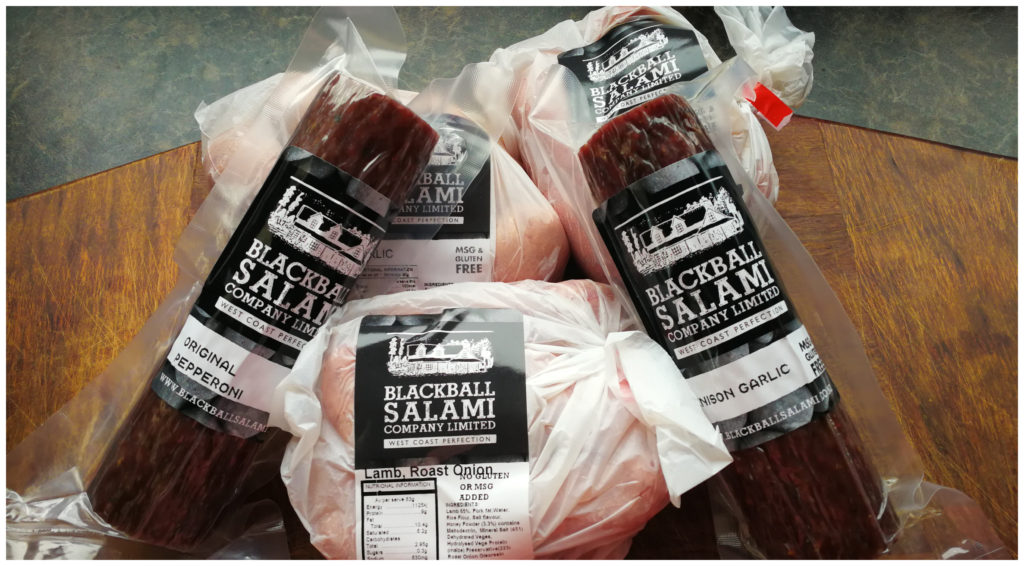
A feast fit for any ‘Carnivore King’
We had already tried their garlic sausages which we purchased in New World, Greymouth. We were very impressed with the flavour. So we left Blackpool with a couple of different salamis and 3 different flavour sausages. Check out their website to find out where their products are sold. You can also buy online if all else fails.
Other Points of Interest
Before leaving Blackball we took a drive out to the site of the original coal mine, Roa mine site, the foundations of the old bathhouse and we also took a wander around the old cemetery.
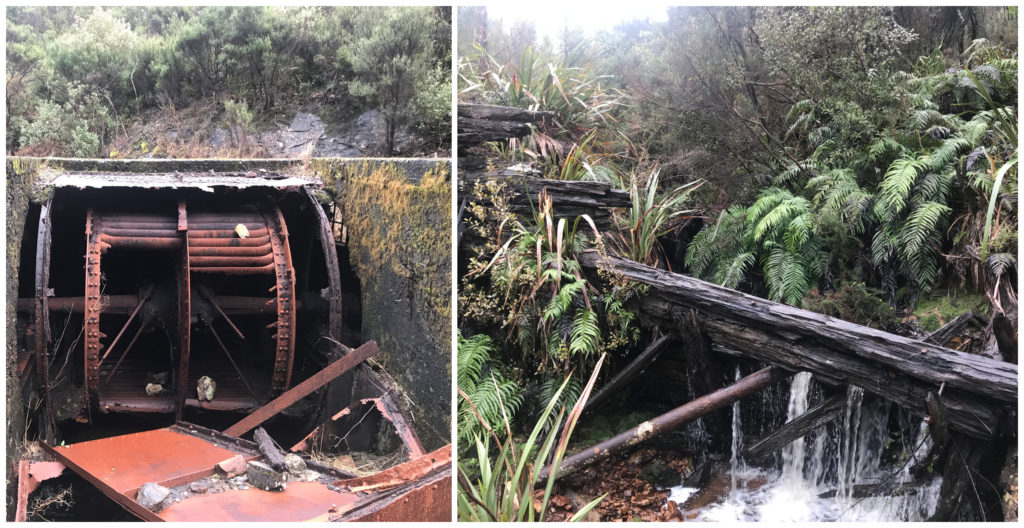
The old relics and dilapidated wooden dam
The Museum of Working Class History was opened in 2009 and is an outdoor open display with photos, history boards and a mock-up display of a miner’ life, above and below ground. It tells the story of the 1908 strike and how it led the country into a new political era – the forming of the NZ Labour Party.
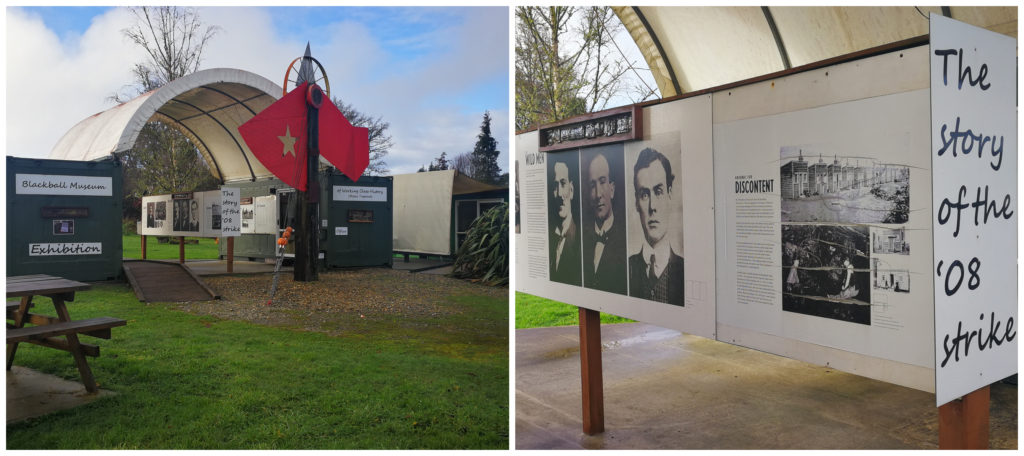
the outdoor display and history storyboards
The town is bracing itself for the opening of the Paparoa Track and Pike29 Memorial Track which opens on December 2019 (Paparoa) and 2020 (Pike29). It starts or finishes in Blackball (depending on which way you go). We noticed that there has been a new large hard-stand parking area put down by the sports fields which we are presuming is for an overnight, self-contained camping area. There is also a handy Dump Station on-site. A donation box is located by the Dump Station.
Summary
It would be fair to say that the West Coast got under our skin in a good way. We have embraced the isolation and enjoyed meeting the people that make the coast what it is. Their resilience and friendliness will not go unforgotten and we hope to get back this way in the near future.
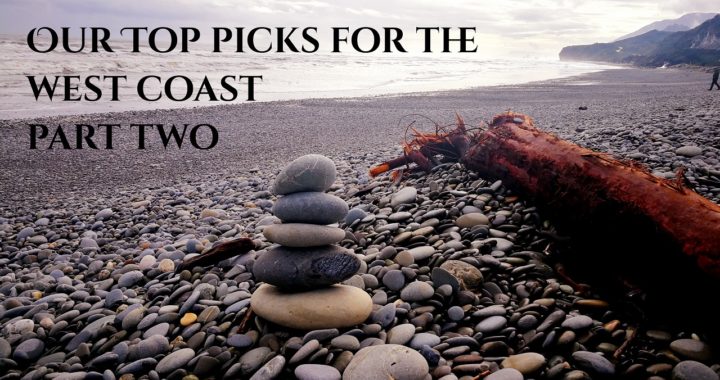
Well done, I live in Greymouth and you’ve captured a lot of the best spots, still some special places we have to keep secret 🤫
Hahaha, thanks Sherryl, I guess every gracious lady has her secrets!! The weather gods kept us from adding a few more activities – have to keep some treasures for next time. It’s been invaluable for us to talk to the locals. They have given us so many stories that google couldn’t. It’s the tales we’ve heard about life on the West Coast that we treasure the most.
We lived on the Coast for fifteen years, and your photos and stories are great reminders of some of our favourite places. Beautifully done.
Hi Robyn, we really appreciate your feedback. We fell in love with the West Coast so we’re keen to share the love. I guess we’re preaching to the converted and you get it too. Linda